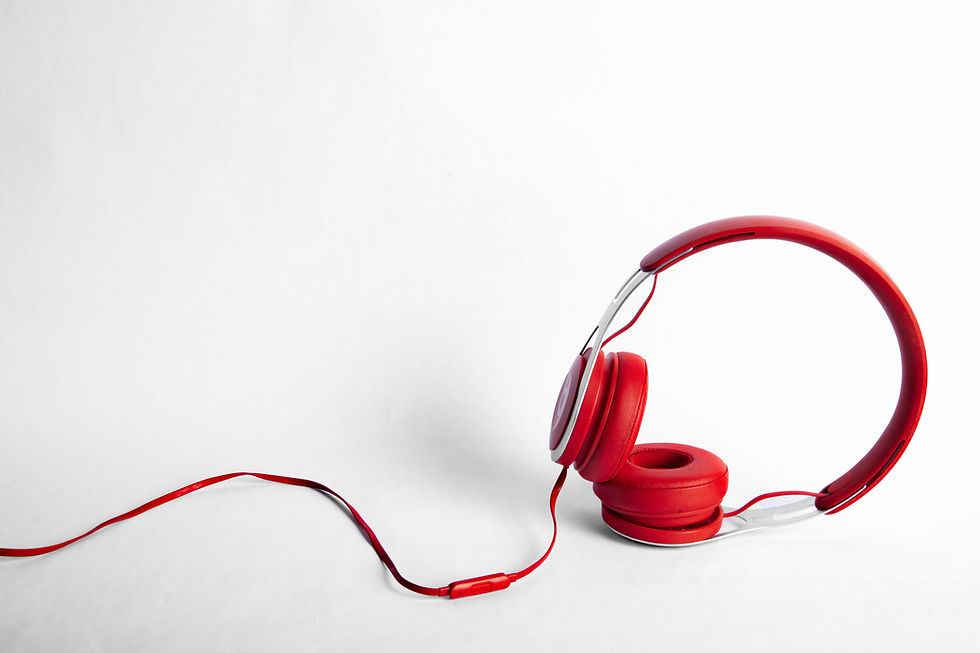
What is a Headphone Mix
- TopKlass Entertainment

- Feb 18, 2023
- 3 min read

As a musician, you're probably familiar with the concept of mixing. It's the process of combining multiple audio tracks into a final, polished recording. However, you might not be as familiar with the idea of a headphone mix. In this blog, we'll explain what a headphone mix is, when and why you would use one, and provide some tips for creating a great headphone mix.
What is a Headphone Mix?
A headphone mix is a separate mix of the audio tracks that is specifically designed for musicians to listen to while they are playing their instruments or singing. It's different from the final mix that you'll hear on the finished recording, and it's meant to help musicians hear their own performance and the performances of the other musicians in the band while they are playing.
When Do You Need a Headphone Mix?
There are several situations where you might need a headphone mix:
Recording in a studio: When you're recording in a studio, it's important for each musician to hear what they're playing and the other musicians in the band. This is especially important when recording a live performance, as you want to capture the energy and vibe of the group.
Live performances: When playing live, it can be difficult to hear your own instrument or vocals over the other musicians on stage. A good headphone mix can help you hear what you're playing and stay in time with the other musicians.
Rehearsals: In a rehearsal setting, a headphone mix can help each musician hear their own instrument and the other musicians in the band. This can help you work out any kinks in the music and make sure everyone is playing in time.
Why Use a Headphone Mix?
A good headphone mix can make all the difference when recording or playing live. It can help musicians hear themselves and the other musicians in the band, stay in time, and make sure the performance is tight and polished. Additionally, a good headphone mix can help prevent hearing damage by reducing the need for musicians to turn up their own instrument or vocals to hear them over the other musicians.
Creating a Great Headphone Mix
Creating a great headphone mix takes some skill and practice. Here are a few tips to help you get started:
Start with a good monitor mix: The monitor mix is the mix that the engineer creates for the musicians to hear in the control room or on stage. This is a good starting point for your headphone mix, as it already includes the balance of the different instruments and vocals.
Add more of your own instrument or vocals: In most cases, you'll want to hear more of your own instrument or vocals in your headphone mix than you would in the final mix. This will help you stay in time and hear any mistakes or issues with your own performance.
Adjust the volume of each instrument and vocal: Use the headphone mix to adjust the volume of each instrument and vocal until you can hear everything clearly. This will help you stay in time with the other musicians and make sure that your performance is tight and polished.
Use EQ and effects sparingly: While it can be tempting to add a lot of EQ and effects to your headphone mix, it's usually better to keep it simple. Too much processing can make it difficult to hear the other instruments and vocals clearly and can also cause latency.
Test it out: Once you've created your headphone mix, test it out by playing along with the other musicians. Make adjustments as needed until you're happy with the balance and can hear everything clearly.
If you're interested in learning more about headphone mixes, you may want to check out the tutorial video on the TopKlass Tutorials YouTube channel. In this video, you'll learn how to create a headphone mix using the DAW ProTools. The video covers topics like setting up a monitor mix, adjusting levels, and using EQ and effects.
TOPKLASS TUTORIALS

Overall, a good headphone mix is an essential tool for musicians recording in the studio, performing live, or rehearsing with a band. It can help you hear your own instrument or vocals clearly, stay in time with the other musicians, and ensure that the performance is polished and tight. With some practice and skill, you can create a great headphone mix that will help you take your music to the next level.

Comments